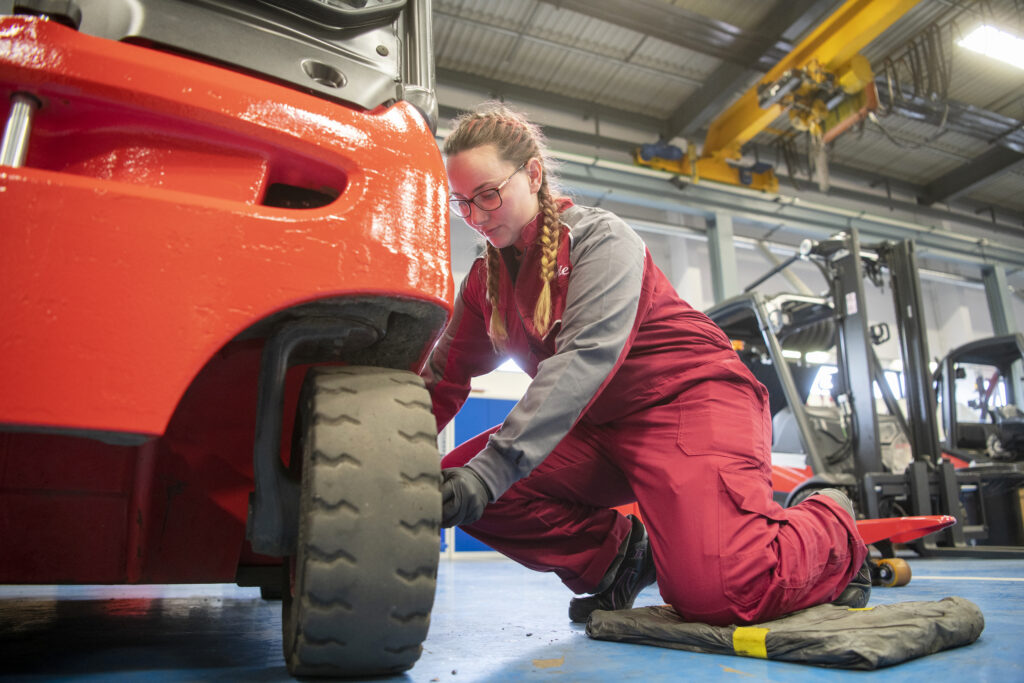Updated: 4.3.2023
With spring officially here, there is no time like the present to get a head start on spring cleaning and a spring check-up on your forklift trucks. And if your business operates in an environment of seasonal changes and extreme temperature fluctuations, it is important to check on the functionality of your equipment.
Follow this instructional guide to get a head start on your forklift inspection and possible subsequent maintenance to ensure safe, clean, and workable conditions for your employees.
Forklift Statistics
Some statistics are important to check intermittently. Your forklift’s service history will tell you a lot about the systems prior issues and possible concerns. And if your forklift trucks are already connected to Linde Connect, your operation will have access to intelligent fleet management data with real-time information on your truck’s overall health.
Search for Wear and Tear Plus Leakage
Forklifts do the grunt work for us, therefore they are bound to wear and tear over time. Check the battery, electrical cables, as well as the spark plugs for degradation. Time can also cause the metal to corrode, which may result in leakages. Check for both of these factors to ensure your forklift will work for years to come.
Check the Cooling System’s Radiator Hose
If your forklifts radiator hose clamps and caps, you’re in the clear. Ensuring the forklift does not overheat is a crucial factor in the longevity of your machinery.
Inspect the Air Intake System
Inspecting the air intake system is important to ensure the forklift will continue working as intended. Seeing that the air intake system is sealed is a good sign your forklift is operating smoothly.
Examine Breaks
Examining the break height and pressure will help determine the safety of them. If they give little resistance, it may be time to replace them. Brakes are an essential safety feature in warehouse operations, so be sure to check them out!
Examine the Forks
Now, this may seem obvious, but you’re looking for any visible cracks to the fork. There are a few other considerations to this inspection, though, including fork height and thickness. If your forklift is experiencing extreme wear and tear, the forks will begin to bend lower and become thinner.
Check the Steering Wheel
The steering wheel directs the entire forklift and is a vital function of the machinery. Checking the valves within, the rubber that encases, and the hoses that connect to the steering wheel will allow you to see if it is functioning properly.
Check the Transmission Fluid
Not only should you be checking the transmission fluid’s levels, but the color and odor as well. The transmission fluid should still have a bright pigment to it. If it appears dark in color, you may have reason to believe the fluid is contaminated. Another useful piece of information will be the level of your forklift’s oil.
Check the Tire Pressure
Checking the tire pressure ensures that no tire-pops will ensue due to a heavy weight load. While checking the tire pressure, be sure to check out if the front and rear-end tires have any holes or tears on them, as well. Ensure the safety of your staff by having regular inspections and safety checks. Following this checklist and maintenance guide will help gauge which forklifts are on their last leg and which ones are reliable, safe, and running smoothly


